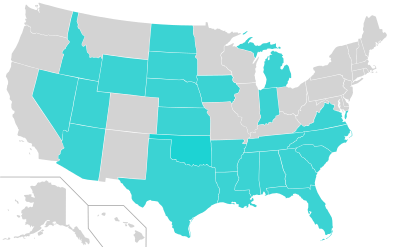Jobs, Income Data Show Right-To-Work States Working
By SEAN HIGGINS, INVESTOR'S BUSINESS DAILY
Posted 06/29/2011 07:09 PM ET
The business world is abuzz over the National Labor Relations Board's complaint vs. Boeing's new South Carolina production line. For NLRB critics, the case boils down to one thing: "right-to-work" laws.
Right-to-work states have generally lower unemployment, higher job growth, lower taxes and better business climates. They have growing populations and have been attracting businesses from other states.
In most states, once a workplace is unionized, employees are required to join the union or they can't work there. But 22 states, including South Carolina, have passed laws that give employees the right not to join. Hence the term "right-to-work."
Unions dislike these laws for the obvious reason: It reduces their membership.
Critics like the Chamber of Commerce say a union-friendly NLRB is simply punishing Boeing for choosing a right-to-work state, a charge the agency has rejected.
But if the complaint stands, it could stop firms in heavily unionized states from expanding or moving to right-to-work states.
Why go to these states?
"It gives employers more flexibility and it gives the workers more individual rights," said Chris Edwards, senior fellow at the free-market Cato Institute. "Unionized workforces are more likely to demand unaffordable compensation that puts the businesses at a disadvantage."
Better Job, Wage Gains
It seems to be a good deal for the workers, too. The U.S. unemployment rate is 9.1%. In right-to-work states the average is 7.9% — 8.6% adjusted for population.
Between 1977-08, employment grew 100% in right-to-work states vs. the national average of 71% and 56.5% in non-right-to-work states. That's according to a January study that Ohio University economics professor Richard Vedder did for the Indiana Chamber of Commerce.
In this period, real per capita income in the right-to-work states grew 62.3% vs. the national average of 54.7% and 52.8% for non-right-to-work states.
Vedder has studied right-to-work laws for decades and argues that this success is not a coincidence.
" I've been looking for ways to show that these laws don't really (impact) anything. But I haven't found it yet," Vedder said.
Between 2000-09, about 5 million people moved to right-to-work states from other states. The population of 25- to 34-year-olds in right-to-work states has grown 16%, according to an American Legislative Exchange Council study, indicating that they "attract the most productive members of society."
Critics argue that these are correlations that don't show causation. The 22 right-to-work states are pretty diverse. Nevada has a unionization rate of around 15%. The epicenter for the housing bust has a 12.1% jobless rate.
Excerpt: Read more at Investors.comDo I see help wanted signs on places here in Oklahoma? Sure do along with help wanted ads in the newspaper and ads on the radio. People scoff at working at McDonald's but if you are energetic and willing to work, you can soon rise in the ranks. A lot of the managers were one-time people behind the counter but they worked their way up to manager. Same is true at a lot of fast food places. Walmart is hiring and so are some stores in the mall. If you are in construction trades (roofing/siding) in particular, you are going to have work in Norman all summer long with the amount of damage from the recent down burst. All of our power lines are still not replaced. If you want to be a member of the trades, they offer the training and apprenticeship for a very good income in the end. Oil and gas is drilling and the state had one of its largest sales tax months in over a year.
With increased revenue, our Governor May Fallin is considering doing away with our state income tax to become more like the leader Texas. She knows that lower taxes are going to attract business and the climate is ripe here in Oklahoma to keep the growth of good jobs sustained as our unemployment rate has been dropping. We can thank Boeing for part of those new jobs as they have been transferring jobs from Long Beach to Oklahoma. Boeing is investing in the Tinker AFB area since a lot of their planes are managed out of Tinker and the new tanker will join their other planes already being overhauled here. Several companies have built their own hangars to do their overhaul work right here at Tinker. The Air Force/contractor partnership has worked well at Tinker AFB over the years and with the new airplane mall, it is working even better.
Oklahoma is following in Texas' footsteps with passing tort reform in this session and with our Republican Governor Mary Fallin
The unions threw everything at the Right to Work in Oklahoma but in the end we passed Right to Work and would hate to think where we would be at today if we were still a Union State. What unions don't want you to know is that Right to Work doesn't do away with unions, it just means union membership is not required for you to work at a certain place and you don't have to pay union dues that end up in the Democrat campaigns.
Here are the Right to Work states in turquoise -- note how many of these states are part of Red State America. Must admit it brought a laugh to see that solid turquoise in the center of the country just like in elections for President it goes solid RED.
There is now a move afoot to make Michigan a Right to Work state. The new Governor of Michigan Rick Snyder is another new Republican Governor not allowing grass to grow under his feet as he tries to get Michigan back on solid footing.






No comments:
Post a Comment